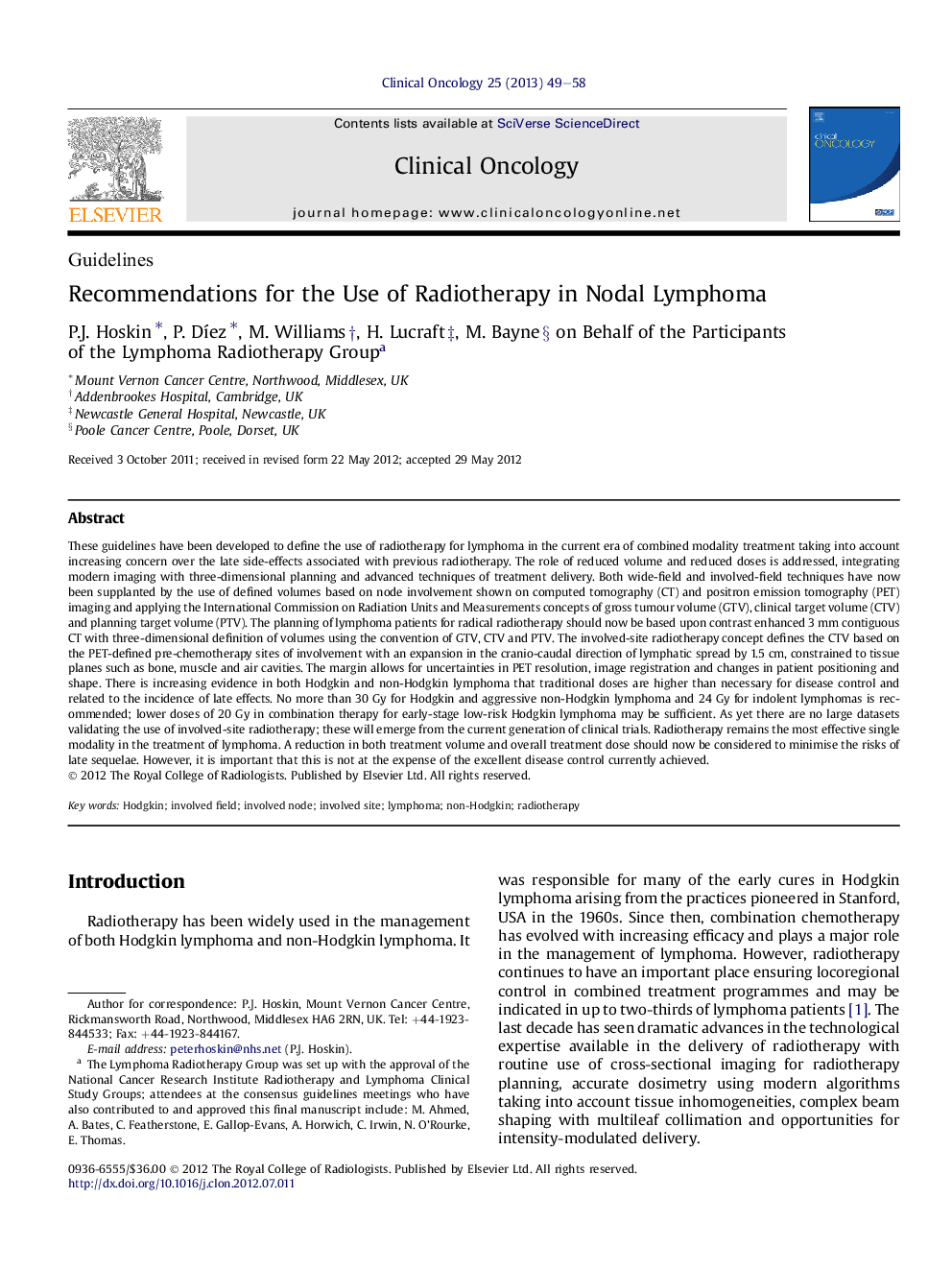| Article ID | Journal | Published Year | Pages | File Type |
|---|---|---|---|---|
| 5698951 | Clinical Oncology | 2013 | 10 Pages |
Abstract
These guidelines have been developed to define the use of radiotherapy for lymphoma in the current era of combined modality treatment taking into account increasing concern over the late side-effects associated with previous radiotherapy. The role of reduced volume and reduced doses is addressed, integrating modern imaging with three-dimensional planning and advanced techniques of treatment delivery. Both wide-field and involved-field techniques have now been supplanted by the use of defined volumes based on node involvement shown on computed tomography (CT) and positron emission tomography (PET) imaging and applying the International Commission on Radiation Units and Measurements concepts of gross tumour volume (GTV), clinical target volume (CTV) and planning target volume (PTV). The planning of lymphoma patients for radical radiotherapy should now be based upon contrast enhanced 3Â mm contiguous CT with three-dimensional definition of volumes using the convention of GTV, CTV and PTV. The involved-site radiotherapy concept defines the CTV based on the PET-defined pre-chemotherapy sites of involvement with an expansion in the cranio-caudal direction of lymphatic spread by 1.5Â cm, constrained to tissue planes such as bone, muscle and air cavities. The margin allows for uncertainties in PET resolution, image registration and changes in patient positioning and shape. There is increasing evidence in both Hodgkin and non-Hodgkin lymphoma that traditional doses are higher than necessary for disease control and related to the incidence of late effects. No more than 30Â Gy for Hodgkin and aggressive non-Hodgkin lymphoma and 24Â Gy for indolent lymphomas is recommended; lower doses of 20Â Gy in combination therapy for early-stage low-risk Hodgkin lymphoma may be sufficient. As yet there are no large datasets validating the use of involved-site radiotherapy; these will emerge from the current generation of clinical trials. Radiotherapy remains the most effective single modality in the treatment of lymphoma. A reduction in both treatment volume and overall treatment dose should now be considered to minimise the risks of late sequelae. However, it is important that this is not at the expense of the excellent disease control currently achieved.
Related Topics
Health Sciences
Medicine and Dentistry
Oncology
Authors
P.J. Hoskin, P. DÃez, M. Williams, H. Lucraft, M. Bayne, on Behalf of the Participants of the Lymphoma Radiotherapy Group on Behalf of the Participants of the Lymphoma Radiotherapy Group,
